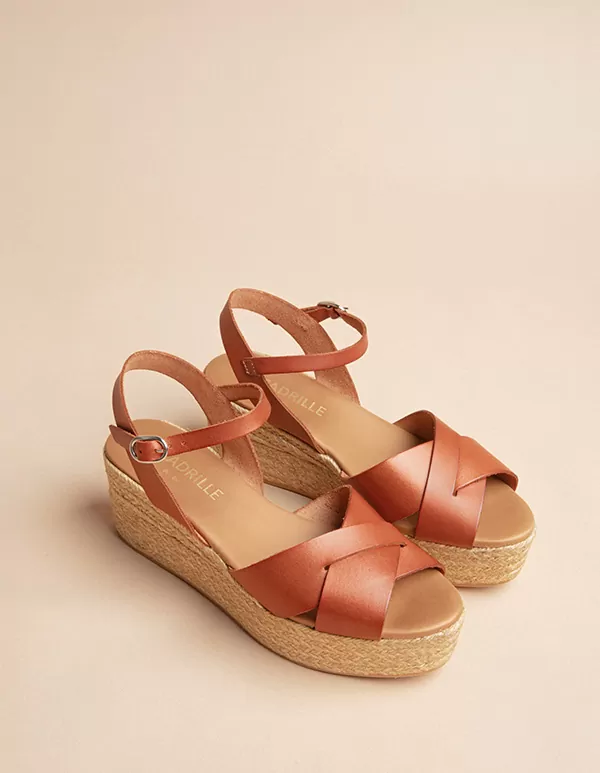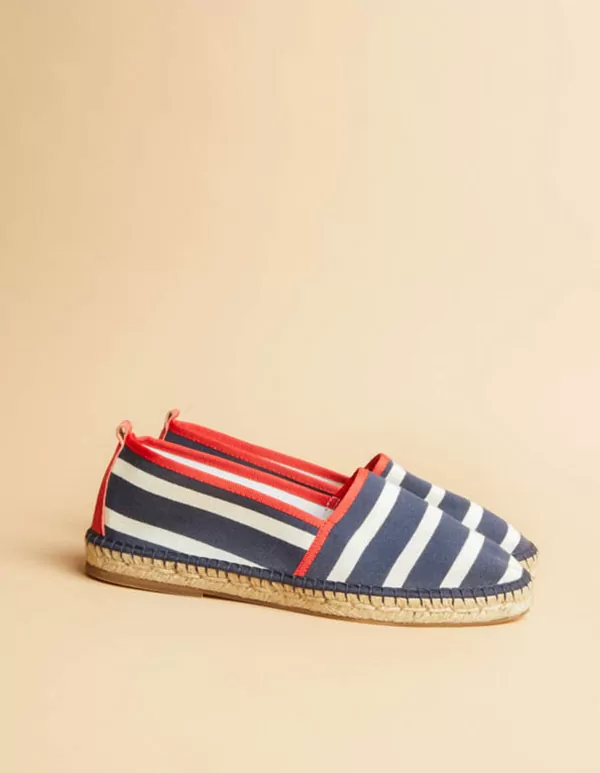The Indian tradition of wood block textile printing : at the heart of our collaboration with Jamini
We share with Usha, founder of the French-Indian brand Jamini, a deep love for craft traditions and a strong willingness to contribute to their preservation. For the second year in a row, we are excited to collaborate again for the creation of a capsule collection highlighting the reunion of Indian textile wood block printing printing techniques and the artisanal manufacture of Escadrille espadrilles.


Old traditions for a contemporary lifestyle
In India, woodblock printing is a 10 centuries old tradition that remains incredibly alive, especially in two small towns in Rajasthan (western India): Bagru and Sanganer, where the craft techniques of this wonderful textile printing method are passed down from generation to generation. It is in this region that Jamini has its collections printed after creating designs that are unique, harmonious blend of flowers or geometric lines, in a palette of luminous colours.
Carving wood blocks
Wood block textile printing starts with the meticulous creation of the blocks, made of wood (sycamore, pear tree, rose), which are carved by specialised craftsmen with small, sharp tools. The motifs are first drawn on the wooden block (which not more than 25 centimetres long to ensure the homogeneity of the print, ). Of course, the finer and more precise the pattern, the longer and more complicated the work. As many blocks of wood are carved as there are different colours in the pattern. The wood is carved by digging and hollowing it out, to create a motif in relief. A block can take up to 6 days to carve if the pattern is very detailed (for some extremely fine patterns the craftsman will choose to attach small iron laces to the wood instead of carving it). In this craft with immutable techniques, each trade is very specialised, so once the blocks have been created, they are passed on to other families who are responsible for the next steps. But before that, the blocks must be soaked in oil for 2 weeks, so that the wood is perfectly nourished and thus ensures an excellent adherence of the paint.
Printing textile
Before printing, the colour palette is defined and tested, often with natural pigments of which the region has the secret. The trays containing the colours are installed on small tables with wheels that follow the craftsman throughout the printing process. Only one colour is printed at a time, and it must dry before the next colour can be applied. It is therefore a slow and patient work that begins, which requires as many passes as there are colours, and there can be up to twenty of them, meaning up to 20 different wooden stamps also!
The printing is done on very long tables on which twenty or so layers of cotton have been laid, tightly stretched to absorb the pressure of the blocks. The fabric to be printed, usually unbleached cotton, is pinned tightly to this table, and the printing work can begin.
The craftsman dips the wooden stamp in the dye and with a steady hand places it on the fabric, applying pressure with the hand that holds the stamp and with the other hand he hits it so that the paint is well distributed. Then he prints the same pattern right next to it and so on until he has covered with the pattern what he wanted to print. His gesture is fast and very precise, using visual cues but above all a dexterity that can only be acquired after years of learning.
When the patterns have been created thanks to the passage of the blocks that form each of the colours, the fabric is entrusted to other families who will fix the shades, thanks to washing, steaming and drying in the sun, a moment that is always extraordinary in Bagru and Sanganer when multicoloured fabrics are spread out in the village squares, where the tradition of printing with wood blocks is so alive that a walk in the streets is a permanent dazzle that only really slows down in the rainy season.
A meaningful collaboration
This human and artisanal tradition is a praise to the work of the hand, to the slowness in the making of pieces that take on a value that goes far beyond a simple product, it is also, through its very slight imperfections, an ode to a certain idea of perfection that has its place in our contemporary lives.
Reason why we are all the more delighted to collaborate with Jamini, because it allows us to value these traditions and to continue the work of preservation, which Usha Bora, the founder of the brand, puts at the heart of her action.
For this second collaboration Jamini and Escadrille have imagined 3 wildly elegant espadrille models, with volutes of beautiful muted red flowers on a beige background, and their ribbons of the same red that form a superb contrast. These JAMINI x ESCADRILLE espadrilles, named UDAIPUR in homage to the sweet life and the beauty of this southern Rajasthani city, are available in 3 models: the mythical and timeless flats, the ultra feminine wedges (8 cm heel and 2 cm platform) with their beautiful red ribbon and the wedges (8 cm heel and 2 cm platform) with a leather strap with a very cinematographic allure.
And always accessories to go with these new models: a weekend bag, a beach bag, and a pareo, which are printed with wood stamps in a luminous midnight blue pattern that unfolds its beautiful, delicate flowers, with its scrolling stems and organic leaves, in harmonies of turquoise, terracotta and mustard yellow.
Together let us celebrate these ancestral craft techniques which, from Spain and France to India, celebrate transmission, the work of the hand, and beautiful things that have a soul.



